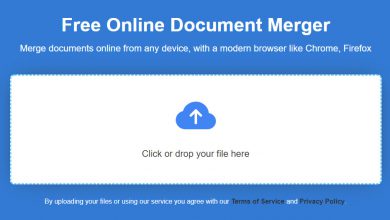
Websites can take time to pay back the money and resources you put into them.
That doesn’t mean you have to sit around and wait for that day.
In fact, search engine optimization gives you a lot of power.
There are specific SEO factors you can use to get quick wins with your new site.
I recommend the following SEO monitoring and optimization tactics to help you measure and position your website for success in search.
1. Set Up Analytics And Diagnostic Tools
You’ll want to get Google Analytics or a similar website analytics tool for tracking visitors to your site and behavior within it if you want to know how well your site is performing and to measure improvement and gains along the way.
There is a lot you can learn from web analytics in terms of insights, and it is useful to have an objective benchmark or baseline to operate from across areas such as traffic, content, conversions, and more.
You should also sign up for Google Search Console and Bing Webmaster Tools.
These will provide more information about how search engines perceive your site, as well as additional keyword performance data that Google Analytics does not provide.
2. Map Out Optimal Site Architecture
We should outline our website content in the same way that we would outline a paper in school or the flow of a book.
Adult books aren’t usually crammed into a single chapter with everything crammed into it. Similarly, everything on a website should not be crammed onto a single page.
The home page is usually navigational, introducing the brand or organization and directing users to other pages on the site. Consider how deep you go into your content.
Whether it’s informational, eCommerce, or another type of topic, arrange it so that it makes sense and progresses from general to specific.
Don’t try to cram too much information onto a single page.
When topics and sub-topics warrant it, create sub-pages.
Long-form content works well for technical and niche topics.
However, rather than overwhelming the user, allow them to click and go deeper on their own terms.
Furthermore, search engines can see the vertical depth of content as well as the breadth of the top-level pages and sections.
Read Google launches ‘Shops’ section in mobile search results.
3. Be Strategic With Internal Link Structure
Inbound links from other sites to your site provide authority status for the pages and your site as a whole.
The process of sharing value does not end with the page to which the link is directed (s).
The manner in which you link to pages on your site can have a significant impact on the page value and link value distributed throughout the site.
Understand or remember that you do not want to link to every other page on the site from every page.
Maintain focused top-level navigation and an only link where relevant and necessary.
This will allow you to pass the page value into the areas you want to pass it into in a more focused manner.
When every page has links to every other page, it creates chaos and does not help prioritize link authority value. It also undermines the work you have done to cleanly organize your site architecture for search engines.
4. Create Quality Content
More content – as long as it is relevant, of high quality, and useful to your audience – is always preferable.
Go for it, whether you’re lengthening existing pages, adding more, or going more in-depth.
This is your opportunity to assess how your migration or new site launch went and step up your game.
If you have thin pages with little text or a lot of pages with significant overlap or duplication of content in comparison to others on the site, find a way to improve or remove those pages.
Returning to the site architecture and internal linking details I mentioned earlier, you don’t want to jeopardize those formats and efforts.
5. Monitor And Troubleshoot Indexing
Priority number one is to ensure that your XML sitemap, robots.txt, and any in-page canonical and indexing commands are in good working order.
You can then track how quickly the search engines index your pages.
Spend a significant amount of time in Google Search Console and Bing Webmaster Tools ensuring that the sitemap is validating and that the pages indexed are the ones you expect and in priority order.
Don’t think that if you build it, Google will come.
Submit items, keep an eye out for errors, and monitor the overall indexing process to ensure that it moves as quickly as possible and that any errors are addressed as soon as possible.
6. Optimize Page Speed
When it comes to page load times, don’t settle for second best.
Page speed on your site should be evaluated using tools such as the Google Chrome Lighthouse auditing developer tool.
Is it quick? Then speed it up!
Slow or failing to meet industry standards? Accelerate!
Don’t ignore or postpone speed until later in the process.
Leverage as many developments and IT resources as possible to achieve the fastest possible speeds.
Time is of the essence, and you don’t want to invest in a slew of other optimization areas if your speed profile isn’t up to par.
7. Maintain Clean Code
If you are experiencing performance issues, indexing issues, or general code concerns, you should investigate further.
Many content management systems include plugins and bloated code that are neither necessary nor useful.
Developer shortcuts (I love developers – I’m not disparaging them) or out-of-the-box features that you don’t require can have an impact on indexing and speed.
They can also cause problems when uploading or updating content if things break frequently.
Minimalist, clean code aids you across the board in achieving the quick wins I’ve outlined.
8. Build Links And Citations
External validation and authority signals are critical.
In addition to what I mentioned in the internal linking section, you should consider any and all relationships that could result in another credible site linking to your site.
Consider collaborations, charities, customers, memberships, trade associations, credentials, and credible directories that could and should link to your site.
Make a list and plan to establish those links on the web to reflect real-life relationships.
However, as you go through the process, be wary of the traps and shortcuts that can get you in trouble.
Citations are another term for other types of links or mentions that add credibility.
These can be obtained by creating Google Maps listings through Google Business Profiles, submitting to data aggregation services, and submitting to other prominent directories and map sites on the internet.
All of these links and mentions expand your brand’s footprint and point to your website as the hub or authority for your company or organization.
Conclusion
Taking a proactive approach to a new website in order to achieve quick wins can help shorten the time it takes to get the visibility you deserve for your new website.
It may take some time for new sites to gain authority status through external links and relevant content that search engines deem superior to others covering similar topics.
SEO isn’t something you do once and then forget about.
However, if you focus on quick wins and what you can monitor and improve, you’ll give your site a head start and a better chance of returning on investment and working toward your goals in a shorter time frame.
Need help with our free SEO tools? Try our free Website Reviewer, Online Ping Website Tool, Page Speed Checker.
Learn more from SEO and read 22 Insightful Google SEO Tips for 2022.




6 Comments